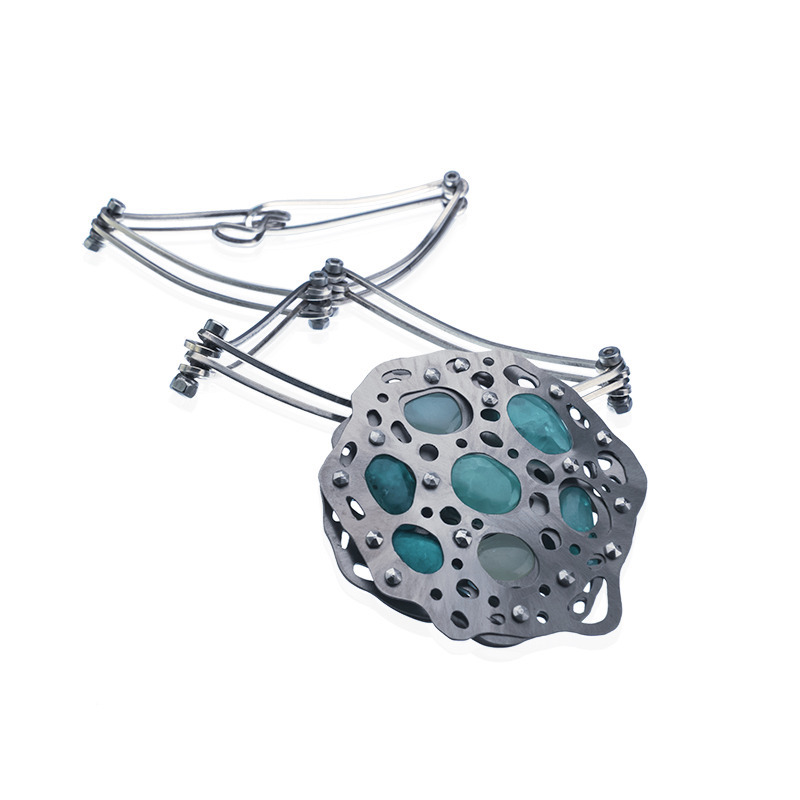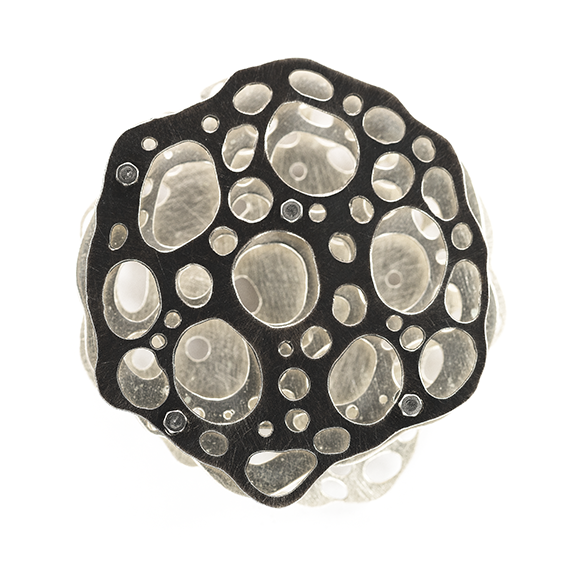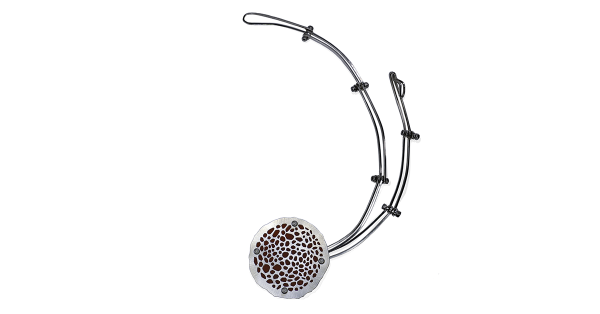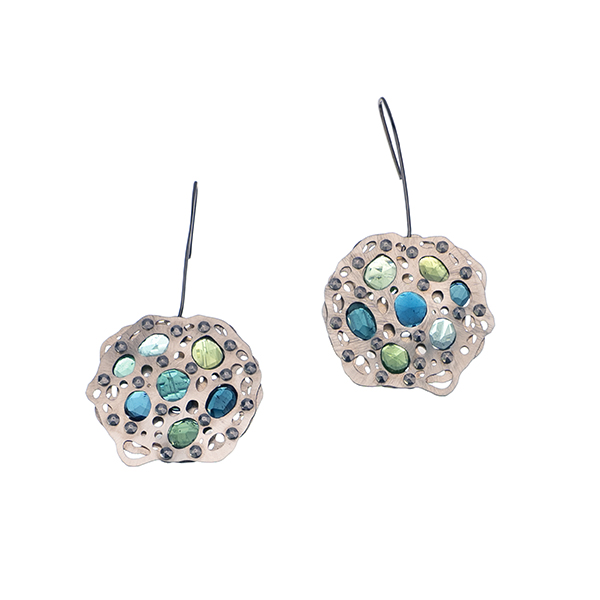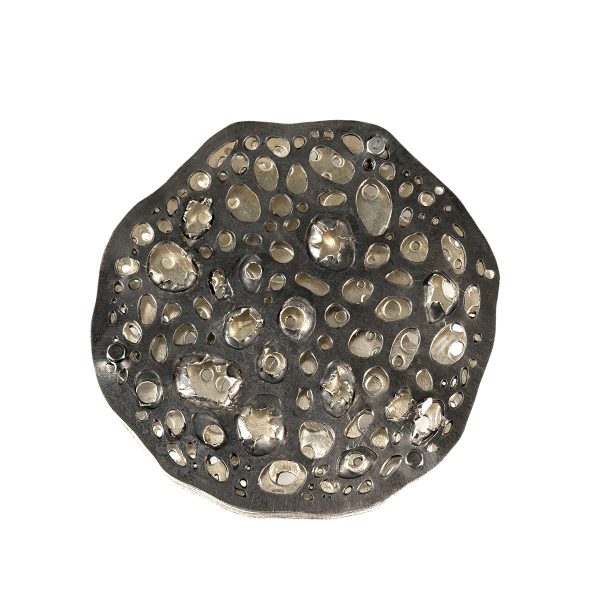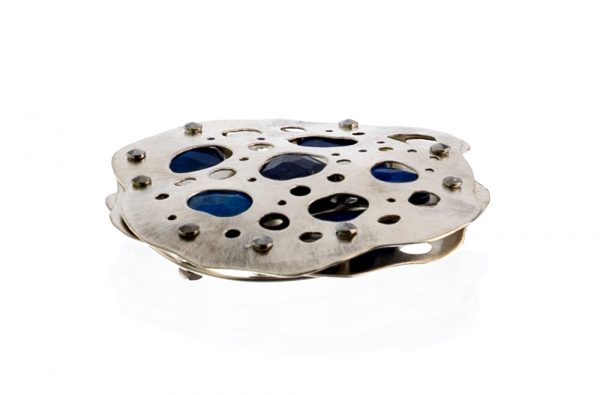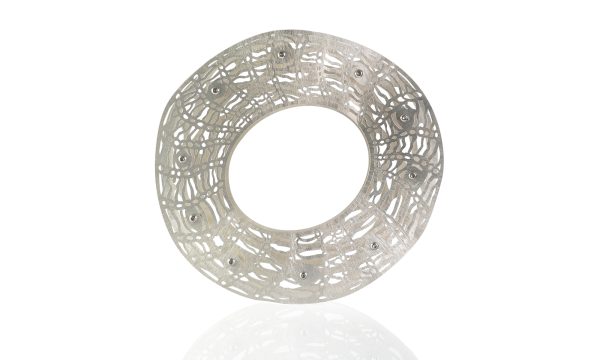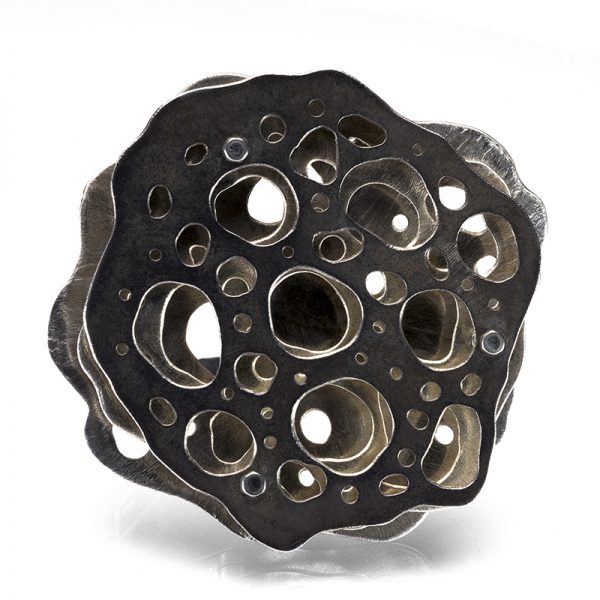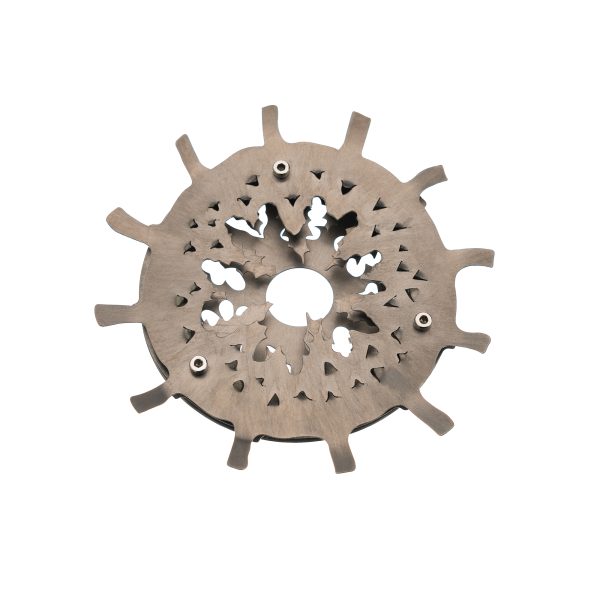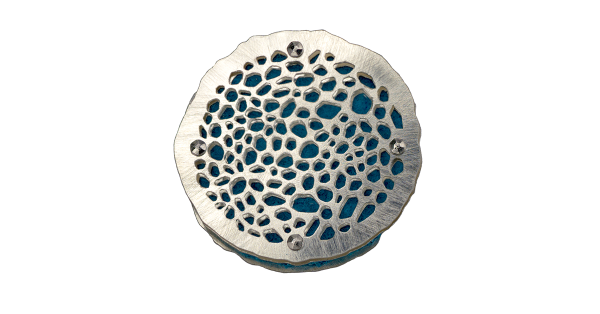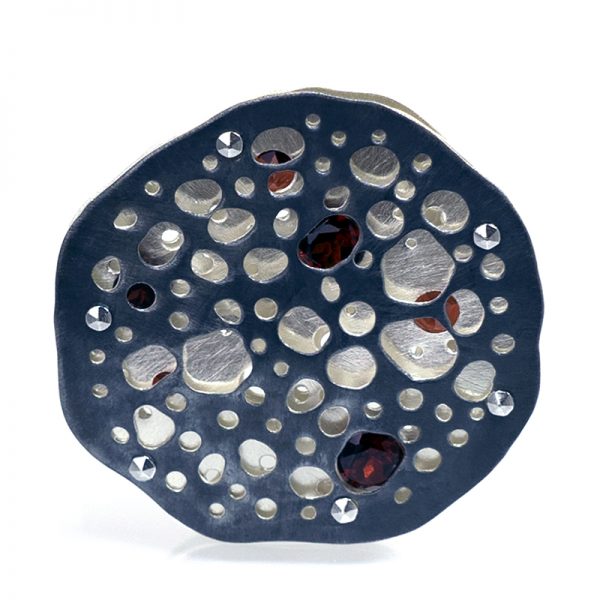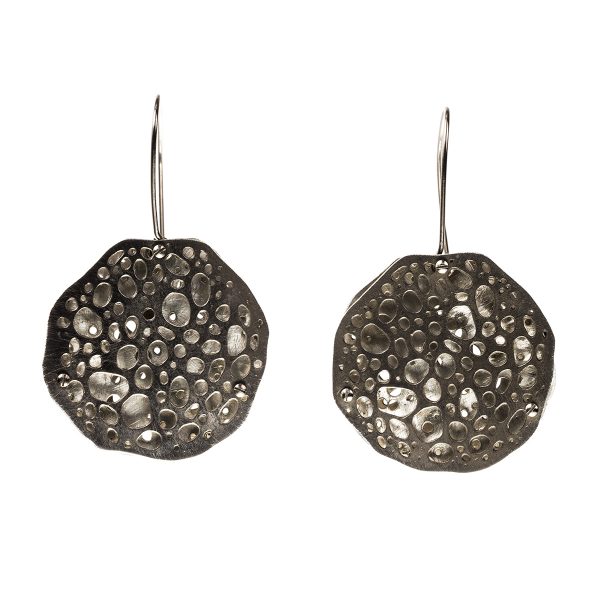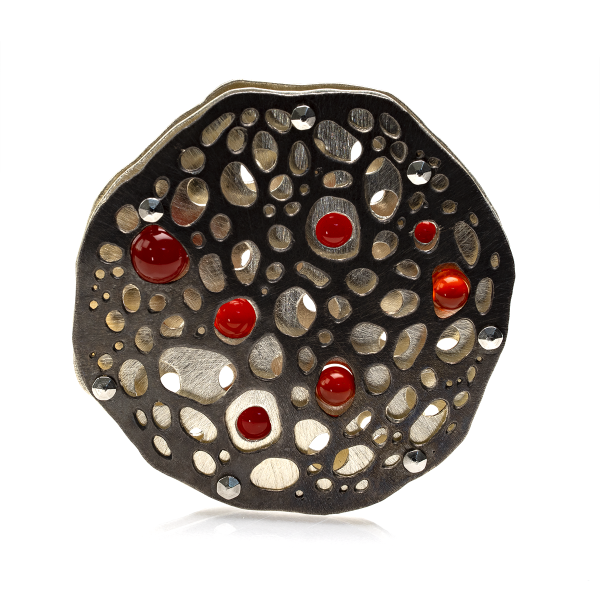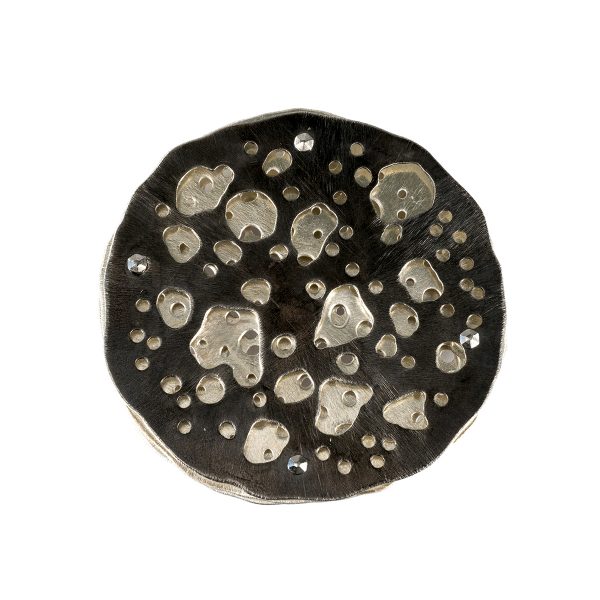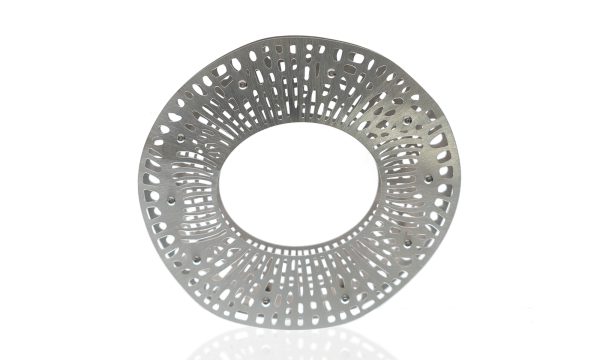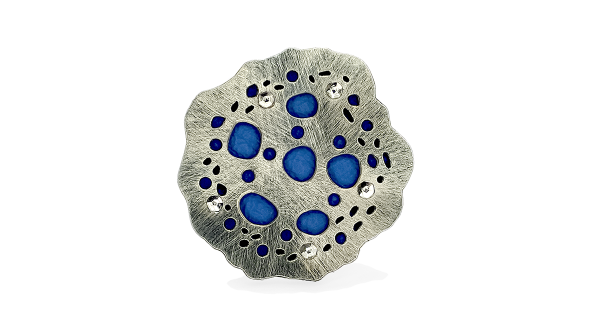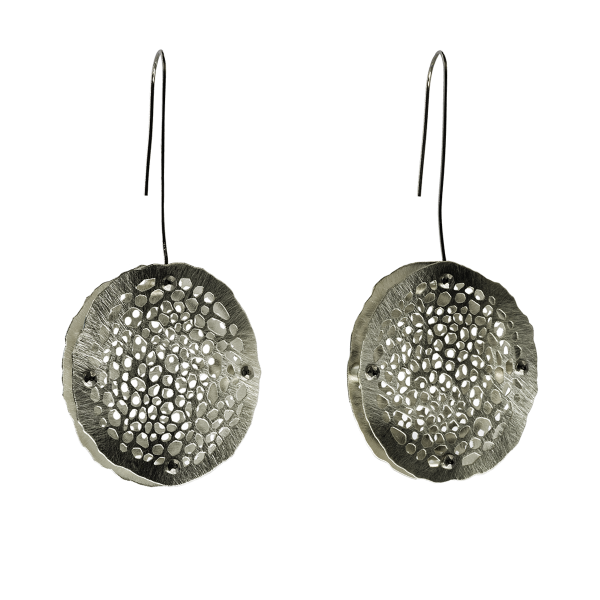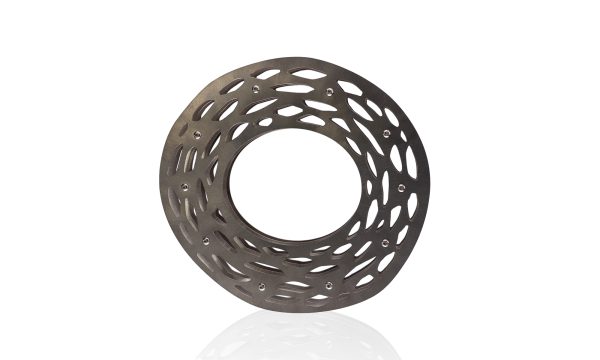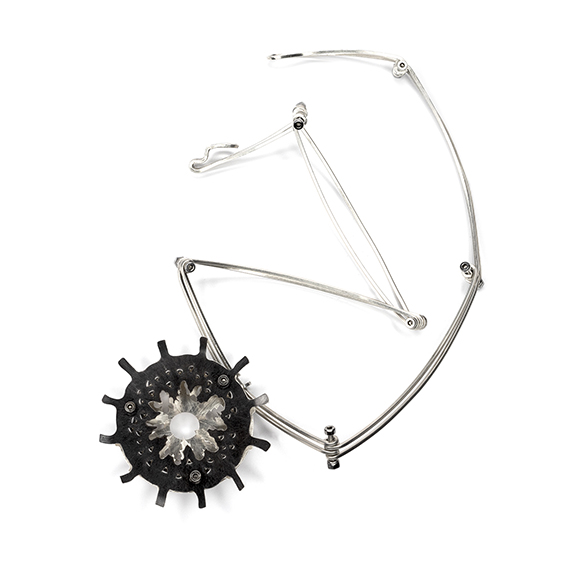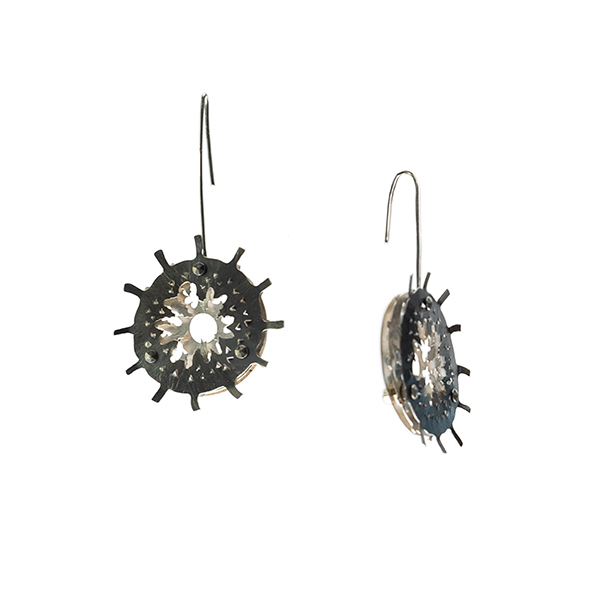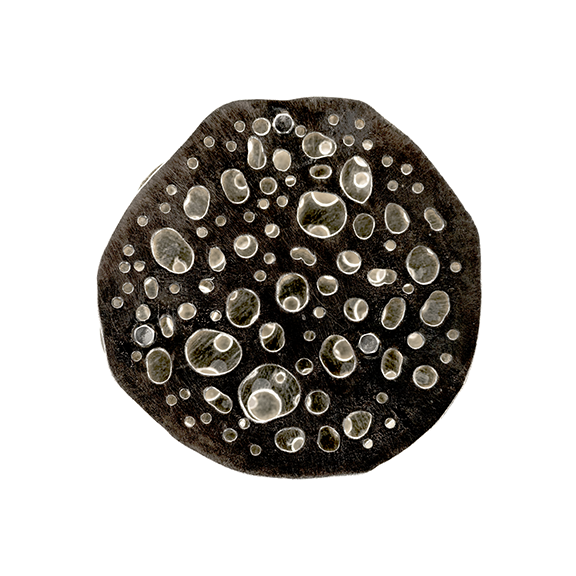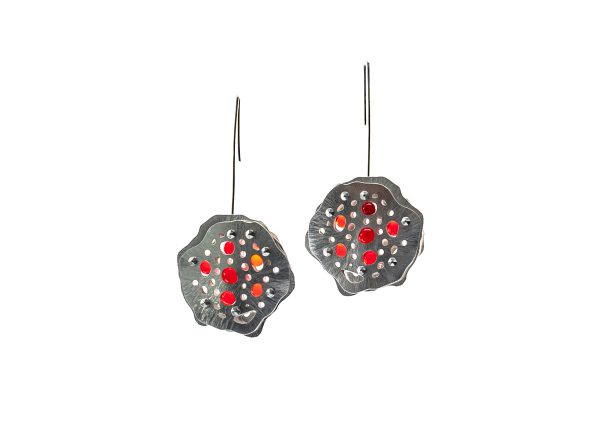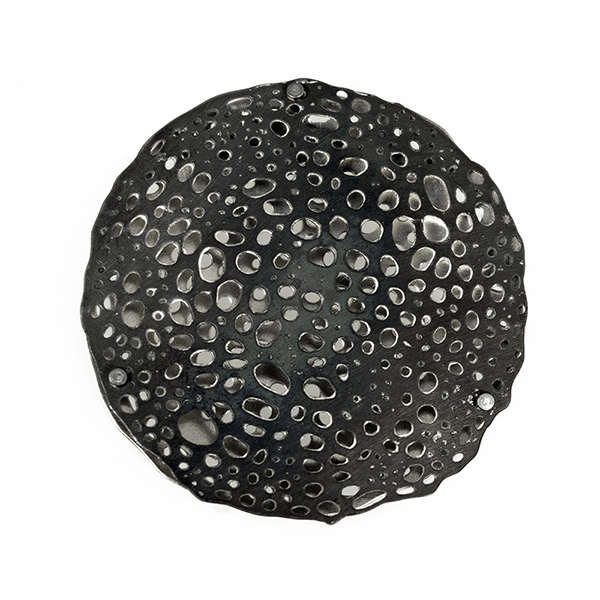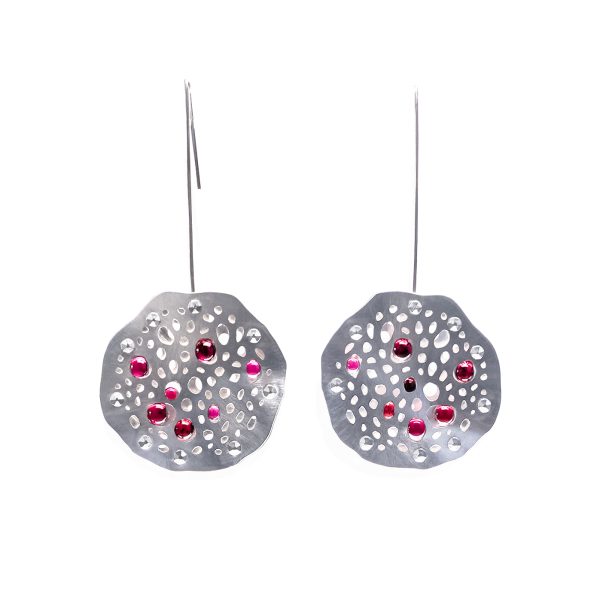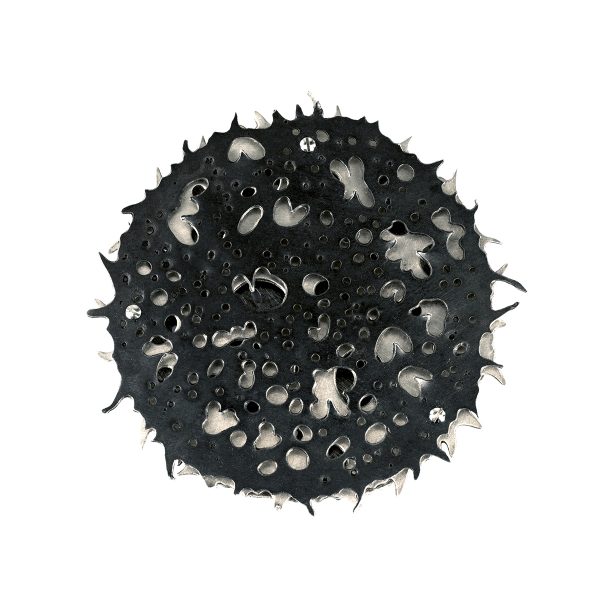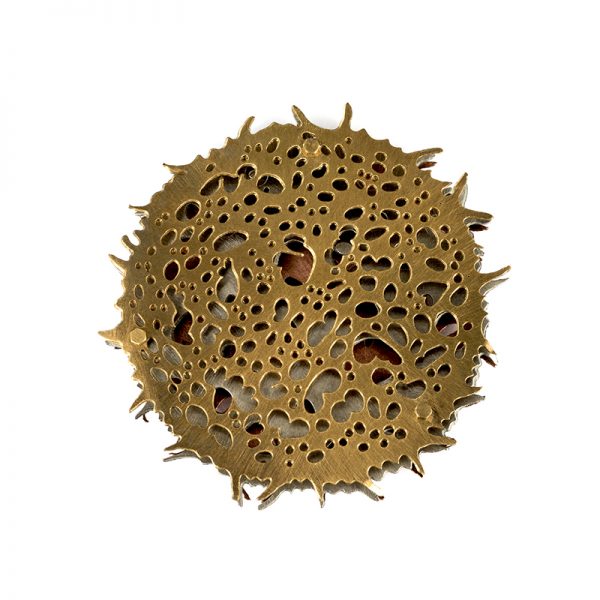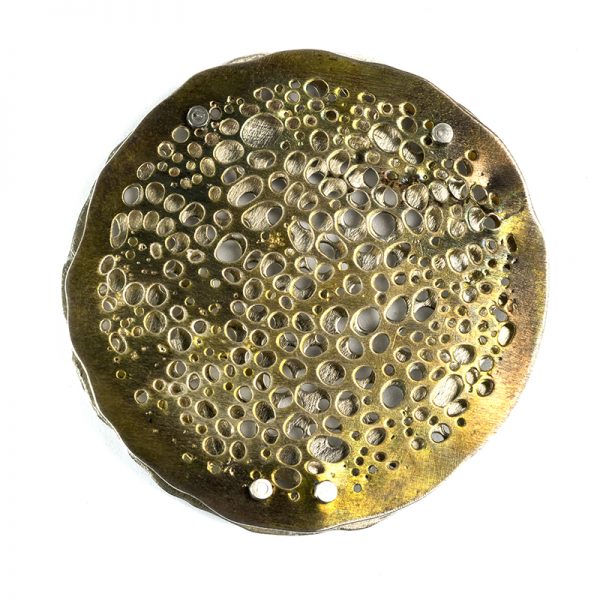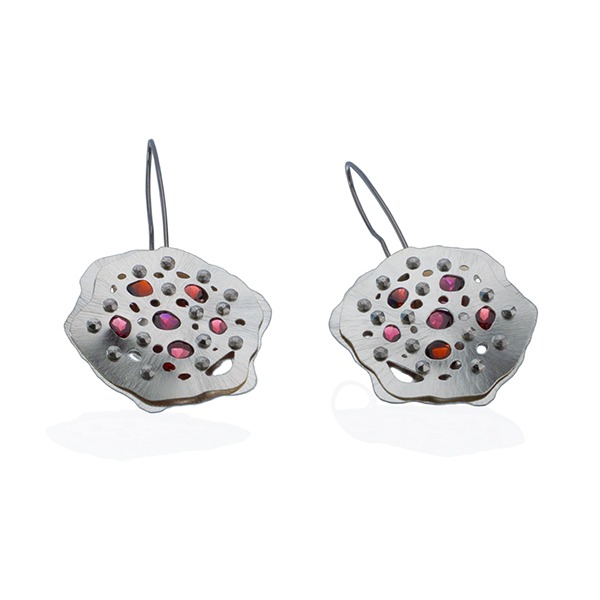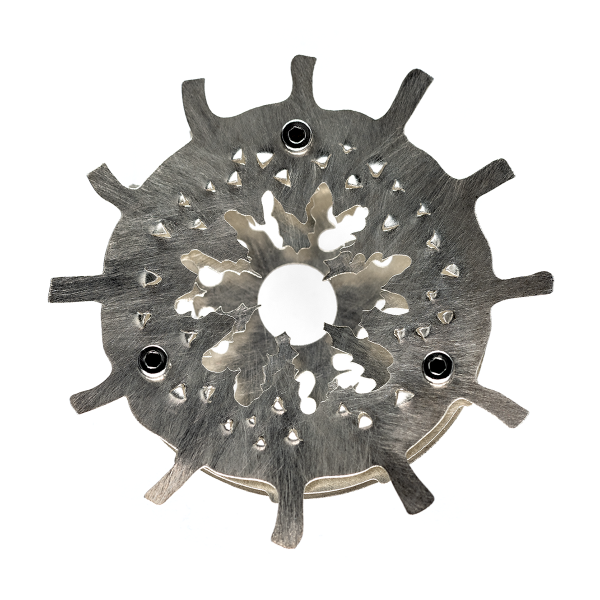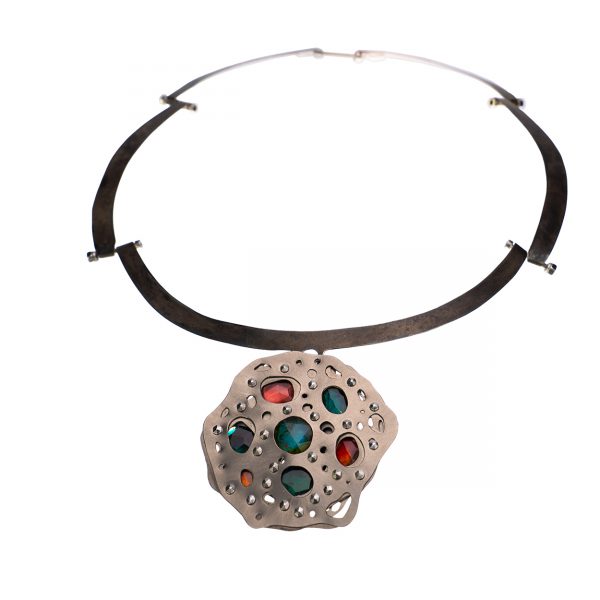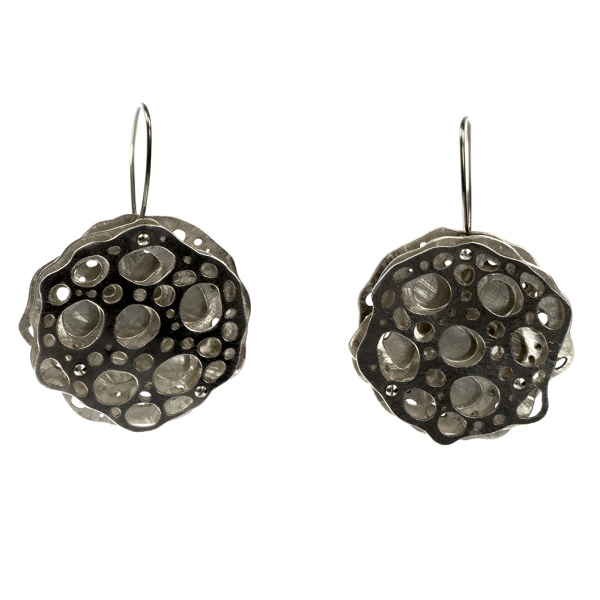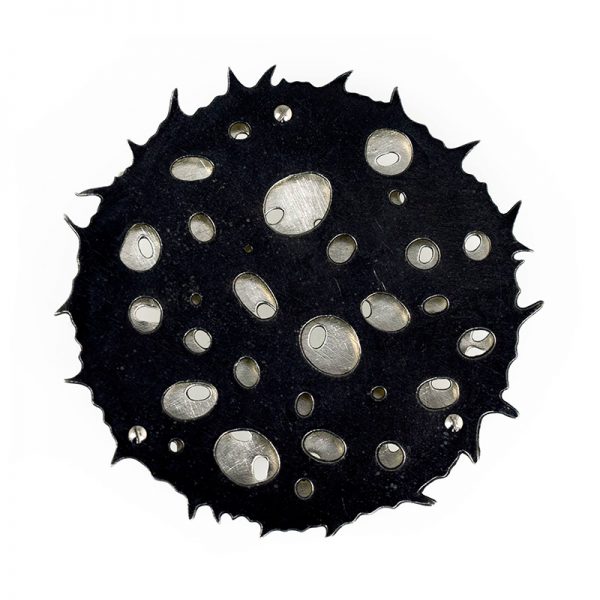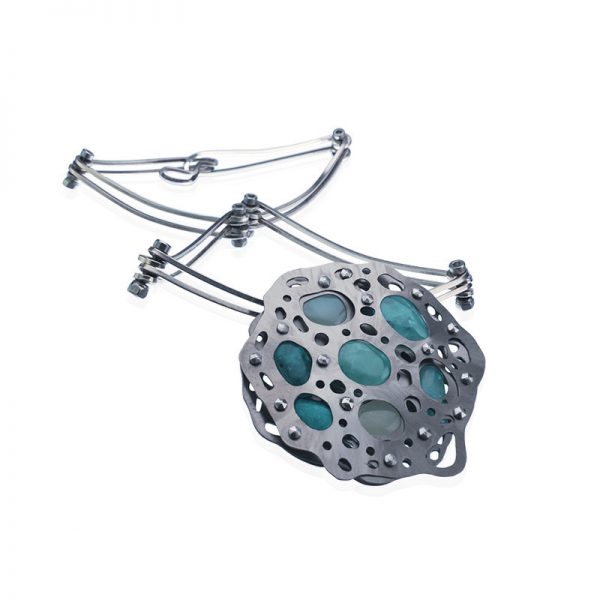The series that sparked the development of my design language! My Radiolarian Design Modified Organism (DMO) series was initially inspired by “Art Forms in Nature” an 1862 publication of hundreds of microscopic sea creatures drawn by Ernst Haeckel during a visit to the Straight of Messina. One illustration sat on my workbench for years as I considered how to bring his drawings to life in metal. I wanted to use an ecologically friendly method that also spoke to the microscopic deep sea creature’s environment….
[Scroll down to view pieces in the series]
HOW IT ALL BEGAN
After deconstructing and modifying Haeckel’s life form drawings, the series prototype was break-through etched with traditional methods. The next step was to seek a more environmentally friendly option. Electrolytic etching with cupric nitrate and distilled water is a less toxic method for the human and the environment. I built an electrolytic etch system with water leveraging the infinitely renewable nature of cupric nitrate when used with sterling silver. The method results in re-usable silver sludge and a re-invigorated eco-friendly etching solution that will last indefinitely. I relied on my engineering background to design and set up the electrolytic etching system to “breakthrough etch” all the way through silver sheet for tiny and large features simultaneously. Experiments with solution density, voltage, current, time, and positioning validated a path to achieve the tricky results.
CONTINUE REDUCING ENVIRONMENTAL FOOTPRINT
Seeking a more environmentally friendly option, I built an electrolytic etch system with water leveraging the infinitely renewable nature of cupric nitrate when used with sterling silver. To reduce water resource use and further embody the mutative effects of industrialization on all sea life, I morphed the process once more by feeding hand drawings into CAD software and converting the files for a laser cutting machine. Locating a laser machine able to cut sterling silver was the final step incorporating modern industrial methods into Radiolaria art to wear.
SEA CHANGE
How and why the sea has changed since Haeckel documented radiolarians in 1862 was important for me to voice in the pieces. Humans deconstruct nature to figure it out. Corporations rebuild nature as genetically modified organisms. Plastics and other contaminants in our oceans lead to more genetic modification. My radiolarian designs are modifications of the organisms deconstructed into flat layers of recycled sterling silver. Reconstructed with industrially produced stainless steel screws and nuts, each radiolaria is a wearable portrayal of a story within our oceans.
